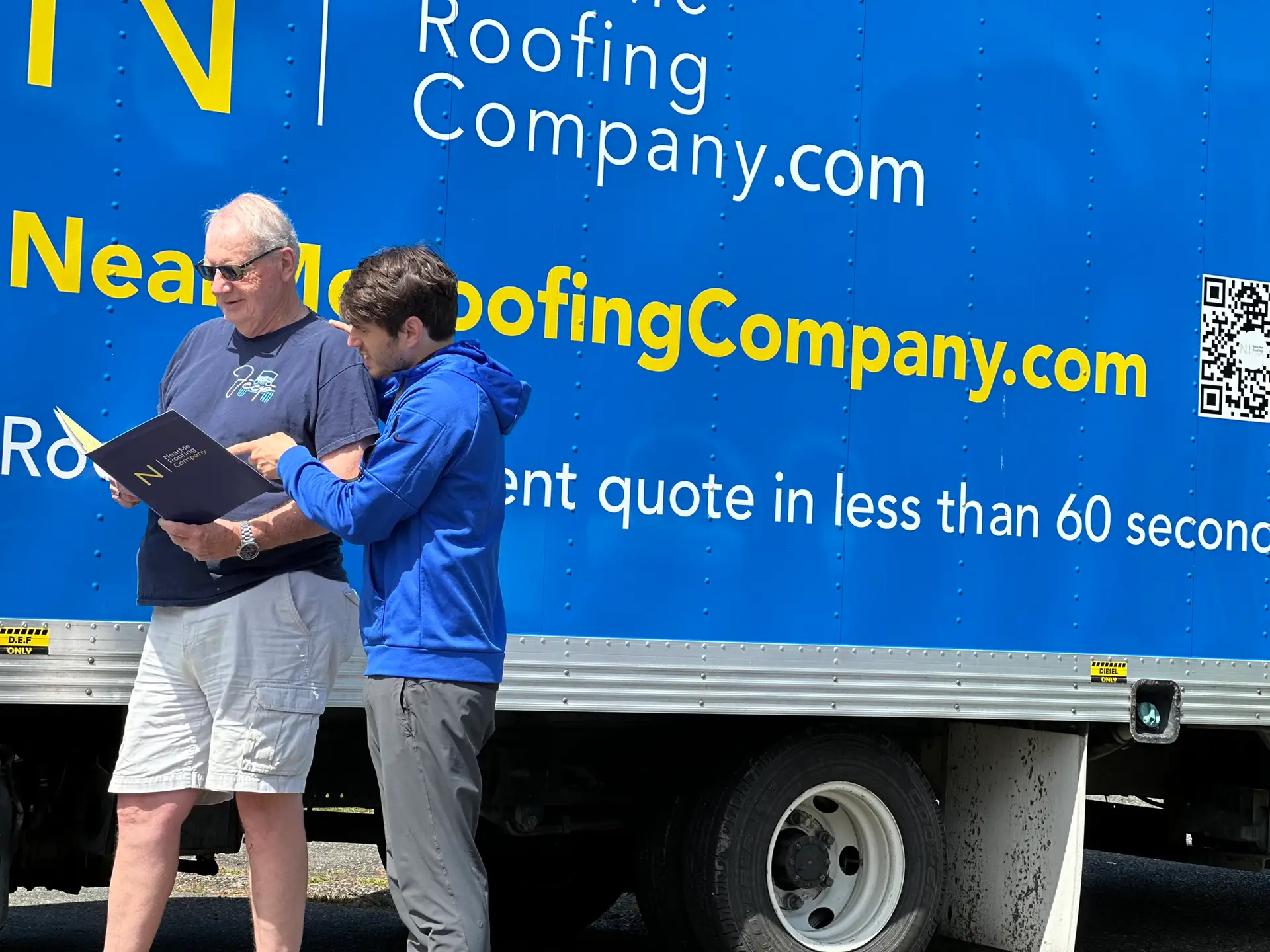Roof repair can be a bad headache. And getting insurance to pay for it? Even more so. But not all is lost because even though the insurance claims process is complex, doing it with the right knowledge, preparation, and attitude can help tip the scales in your favor.
Insurance companies ask for detailed documentation and specific steps to be taken for roof claims. In this blog, we’re going to break down the process for you to maximize your chances of getting approved.
Understanding Your Insurance Coverage
The fine print of any roof insurance policy determines whether the claim will be accepted or denied. Let’s take a deeper look at what that means.
Replacement Cost vs. Actual Cash Value Policies
Insurance companies take depreciation into account when determining your roof’s value. Under the Actual Cash Value (ACV) policy, that means that the older your roof, the lower your payout. This is in contrast to a Replacement Cost Value (RCV) policy which pays for the replacement regardless of the roof’s age.
Let’s imagine a hypothetical scenario. Suppose your roof replacement costs $10,000 with a $4,000 deductible. Under the RCV policy, you’ll get $6,000 regardless of the roof’s age. However, under the ACV policy, a 5-year-old roof might get $4,500, a 10-year-old roof $3,000, and a 20-year-old roof might get nothing.
Even though RCV policies cost more upfront, they limit your out-of-pocket expenses to the deductible, while homeowners often have to pay a substantial amount themselves under an ACV policy, especially with older roofs.
Coverage Limitations and Exclusions
Standard insurance policies generally cover damage caused by sudden and accidental events such as fire, wind, hail, lightning, vandalism, and falling objects, but don’t cover damage caused by general wear and tear, neglect, earthquakes, animals, mold, rot, or improper installation.
This means that even though the roof is damaged, insurers will reject your claim if they find that the issue could have been avoided with proper care, and many policies include clauses specifically stating that they will not cover roofs that are ill-maintained or in poor condition. So make sure you review your insurance policies thoroughly before filing for a claim.
Age-Related Policy Restrictions
Your roof’s age limits your coverage options. For example, many insurance companies don’t cover roofs older than 20 years, and many others offer only ACV coverage for aging roofs. Some insurance companies also ask for inspection reports by a certified professional for roofs older than 15 years before offering an insurance policy or continuing coverage.
Certain states also offer regulatory protection. For example, insurance companies in Florida can’t cancel coverage simply because of the roof’s age if the roof is not yet 15 years old.
The roofing material used also affects your insurance and the rate you’re eligible for. Materials like slate, tile, concrete shingles, and metal offer better roof protection and can help you qualify for lower premiums despite having higher replacement costs.
Documenting Roof Damage for Your Insurance Claim
You can’t support your claim without proper documentation. And even if the damage is obvious, insurance companies will ask for documentation supporting your case. So, how do you prepare the evidence?
Take Photos of Visible Damage
Photos are the strongest proof of your claim. Start by taking wide shots from various angles to show a complete picture (pun intended) of what happened. Then take close-ups to show any damage, such as missing or cracked shingles, impact marks from hail or falling objects, structural issues such as sagging, damaged skylights and vents, or exposed underlayment.
Record Weather Events and Dates
Insurance companies use weather records to verify claims, so keep detailed records on weather events such as the exact date and time of the damage, the type of weather that caused the damage (hail, wind, rain), and what you observed both during and after the event.
Add official weather reports to your documentation as supporting evidence to prove that the damage was caused by a specific weather event, and not by general wear and tear. Also, keep in mind that many insurers now use advanced inspection technology and weather data systems to confirm claims.
Create an Inventory of Interior Damage
Roof damage is not just confined to the exterior. Many roof problems cause damage inside the home as well, such as water stains on the ceilings and walls, sagging drywall, peeling paint, and mold in the attic.
Create a complete list of damaged personal items with their estimated repair or replacement costs. This will give weight to the severity and urgency of your claim.
Many professional roof inspectors prepare detailed reports outlining the damage and their recommendations on what repairs and replacements will be needed. Just remember that the better your documentation, the more likely your insurance company will be to approve your claim.
Navigating the Insurance Claim Process
Many homeowners get overwhelmed by the insurance claims process – and rightly so – but understanding what it entails can make it less confusing.
Get a Professional Roof Inspection
The first step is to get a professional inspection before filing for insurance – this lends credibility to your claim and offers solid proof that helps your insurer understand the context of what happened and the extent of replacement that’s needed.
It also helps you get a good idea of what your chances are for approval. Otherwise, filing the claim might count against you when insurers see that you haven’t done your homework and have filed a claim without understanding your eligibility.
A good inspection evaluates the roofing material, structural integrity, and interior damage. Many licensed contractors offer free roof inspections and know what insurers are looking for – for example, wind-lifted shingles, water penetration because of flashing issues, and fallen tree branches are all signs of storm damage.
Ask your contractor to provide a written report with pictures and estimate whether a repair or full replacement is needed. This helps prepare a convincing report for you that increases your chances of approval.
File Your Initial Claim Properly
When you want to file a roof damage insurance claim, don’t do it through your local agent but contact your insurer’s claim center directly.
They’ll ask you two key questions:
- What happened?
- When did it happen?
Share all the details you can , including documentation such as photos and the inspector’s report. And once you receive your claim number, share it with your contractor right away to ensure smooth coordination. You should also check with your neighbors to see if they’re also filing any claims – this will help your own claim be taken more seriously.
Time is also of the essence when filing insurance claims. Many insurance policies require you to file your roof damage claim within 30-60 days of the damage occurring, while others allow time up to a year.
Be Prepared for an Insurance Adjuster’s Visit
Insurance adjusters are trained to assess damage, and they represent the insurance company, not you. Prepare for their visit by clearing roof access, ensuring a safe inspection environment, and gathering all maintenance records.
You should also try to be present during the inspection so that you can provide context and answer any questions they have. It’s also a good idea to have your roofing contractor present during the adjuster’s visit so that they can point out any subtle damage and make sure that nothing gets missed.
In addition, try not to overthink the adjuster’s visit. Be honest about pre-existing conditions, remain polite and professional, and walk the property with them. And if something doesn’t make sense, ask questions and ask for specific policy references.
Handle Any Claim Denials and Appeals
If your claim is denied or undervalued, don’t give up! You can ask for a second inspection or appeal the decision. Sometimes claims are denied because of incomplete documentation, or the adjuster deems the claim to be more cosmetic or age-related than damage-related.
When requesting a re-inspection, collect more evidence such as extra photos, detailed repair estimates, and expert opinions. Write an appeal letter explaining why you think the denial was incorrect.
Many times, previously denied claims get overturned through sheer persistence and additional documentation. Sometimes, it also helps to bring in a public adjuster or get a second opinion from another roofing company.
Maximizing Your Roof Replacement Coverage
Even once you’re approved for insurance, it doesn’t guarantee that you’ll get the full payment. You’ll need to put in some extra effort to ensure maximum payout.
Negotiation Strategies with Adjusters
Let’s look at a few tips to help you negotiate with your adjuster and get the outcome you want:
- When the adjuster visits, bring your contractor too. They can help explain technical details to the adjuster and make sure they understand the full extent of the damage.
- If the claim is denied, request a second opinion from another adjuster. This may result in an immediate reversal of the verdict.
- Use matching laws or the ITEL process to show how partial repairs result in mismatched sections. This often pushes insurers to approve full replacement.
Understanding Supplements and Line Items
Many homeowners don’t understand what supplementing is. Supplements are simply revised estimates for items that your insurance missed or paid less for.
Insurance companies often omit essential costs such as overhead, profit, debris fees, and building code requirements. These gaps can cost you thousands so make sure all costs are accounted for and any supplements needed are submitted to the insurer’s claims office.
Here’s how to go about it:
- Compare your contractor’s estimate to the insurer’s claim amount
- Identify any missing items or differences in price
- Submit a revised estimate along with documentation
- Negotiate until an agreement is reached
Avoiding Common Insurance Claim Mistakes
With your insurance policy, you’re entitled to proper repairs that restore your property to its pre-loss condition, not the cheapest fix.
But many homeowners often make mistakes that reduce their claim’s payout and lead to them paying out-of-pocket for some things. Here are some common mistakes you must avoid when filing for an insurance claim:
| Mistake | Why It Hurts |
| Delaying your claim | Could violate policy deadlines |
| Failing to document damage | Leaves you with no proof |
| Not reading your policy | Surprises about exclusions or deductibles |
| Taking the first contractor’s word | It’s helpful to get multiple quotes and second opinions |
| Not being present during inspection | Damage might get missed or underreported |
| Accepting the first settlement offer | Initial estimates are often underpaid by about 20% |
| Making repairs before the inspection | This could void critical evidence |
Conclusion
To get insurance to pay for roof replacement, document damages, review your policy for covered perils (like hail/wind), file a claim, get a contractor’s estimate, and work with the adjuster. If you live in the greater Seattle area, opt for a professional roofer with experience working with insurance companies like NearMe Roofing Company. As Seattle and the Puget Sound’s #1 residential roofing company, we are experts in insurance-related roof replacements and are dedicated to securing your home. So give us a call today!



